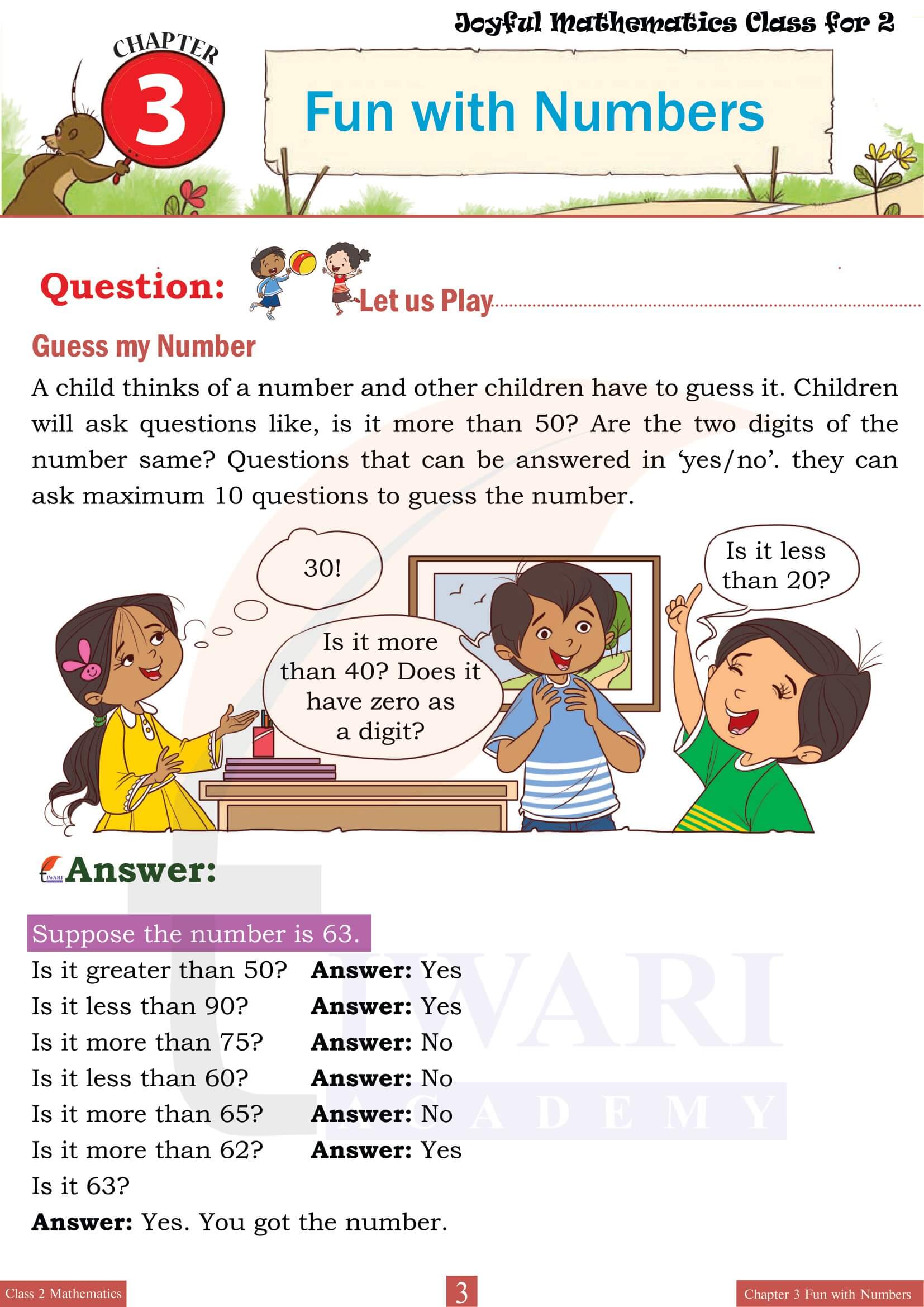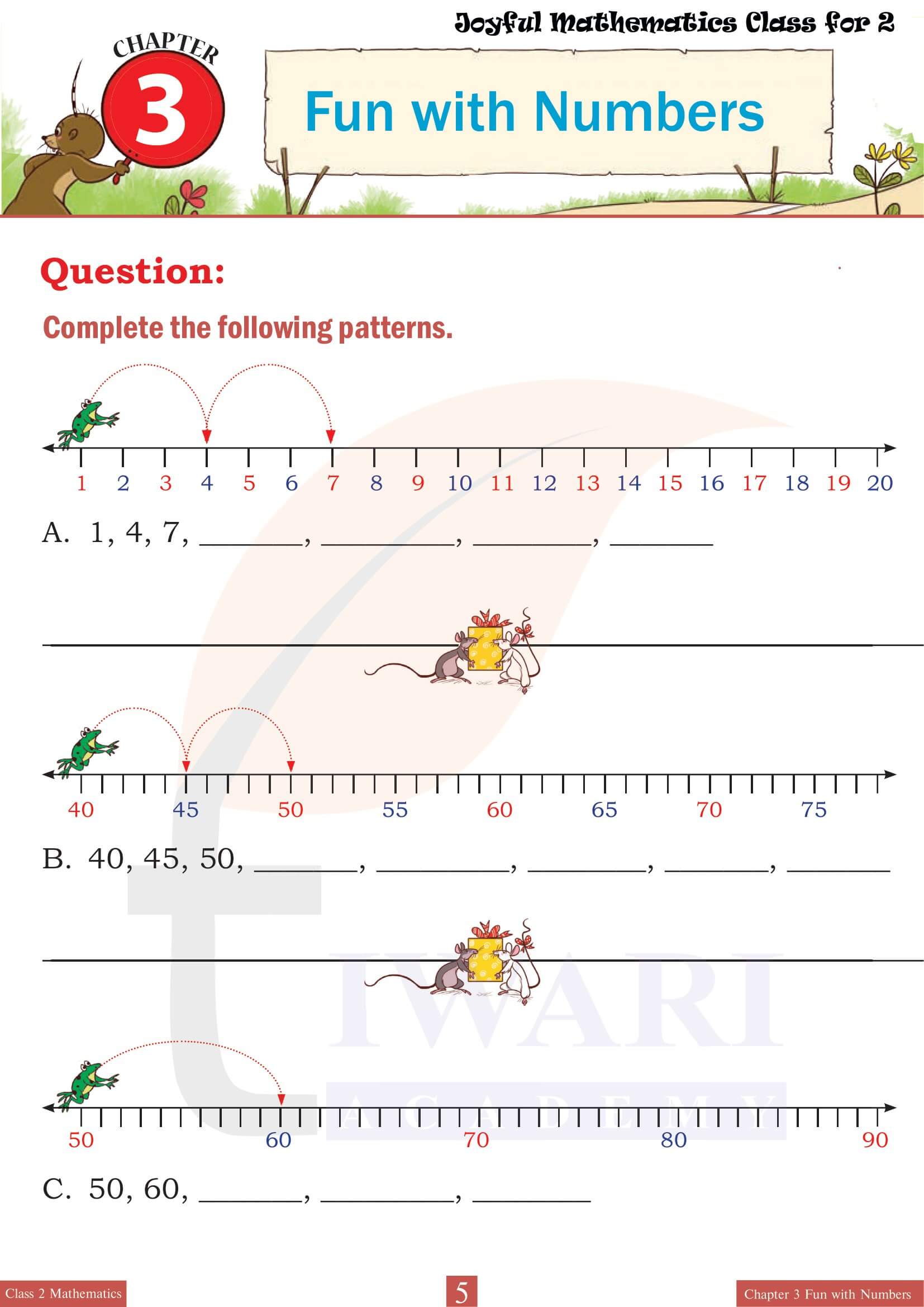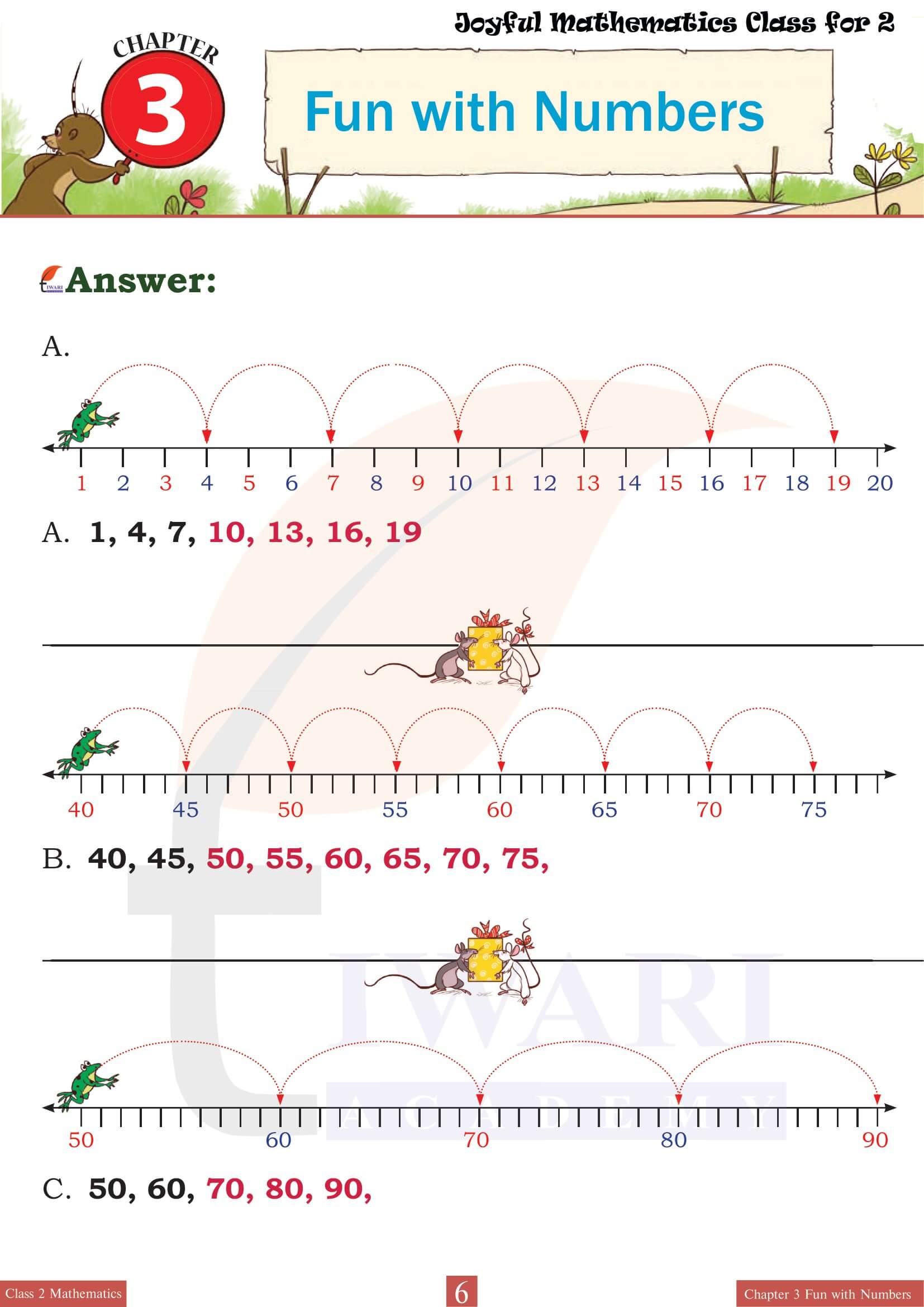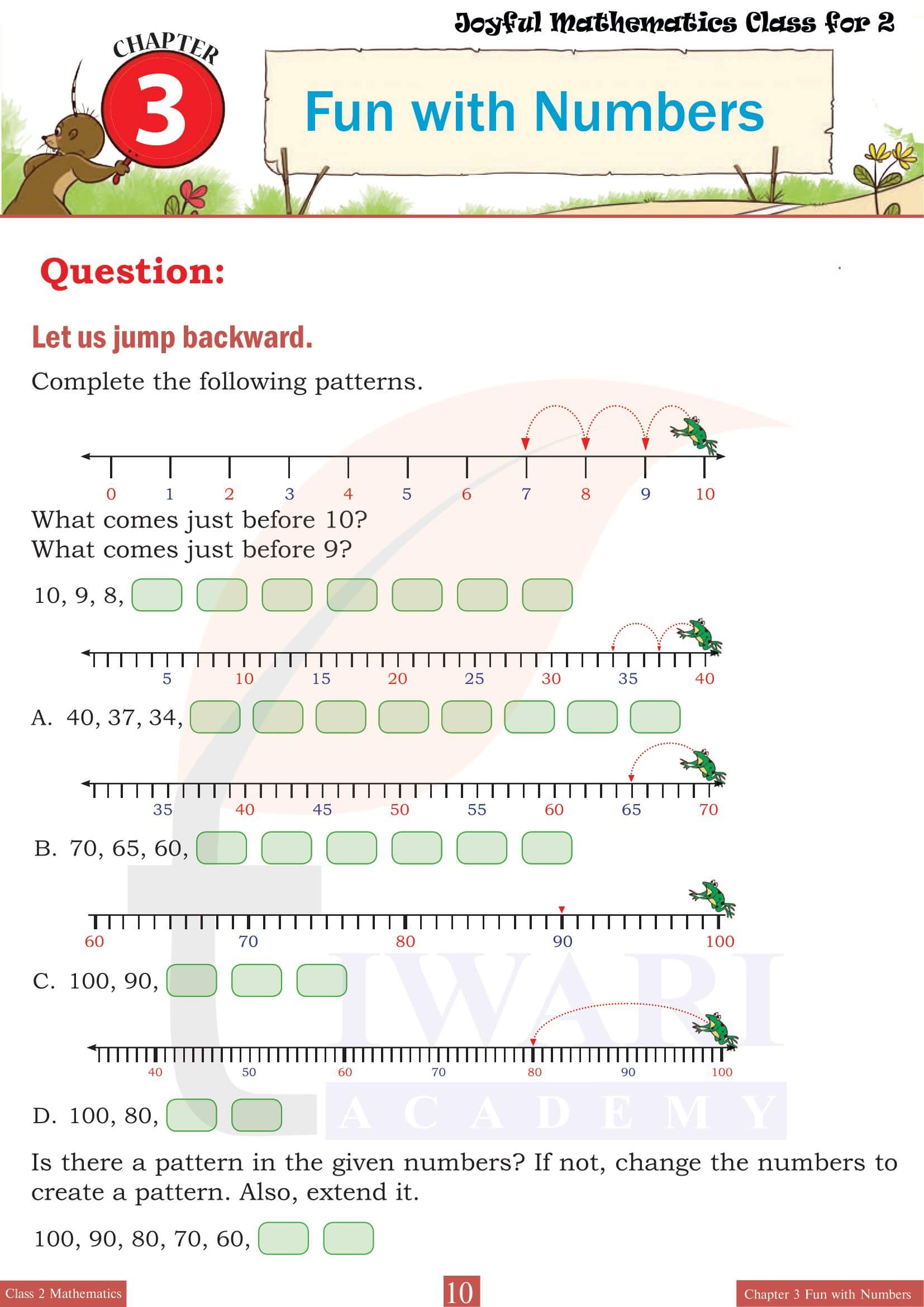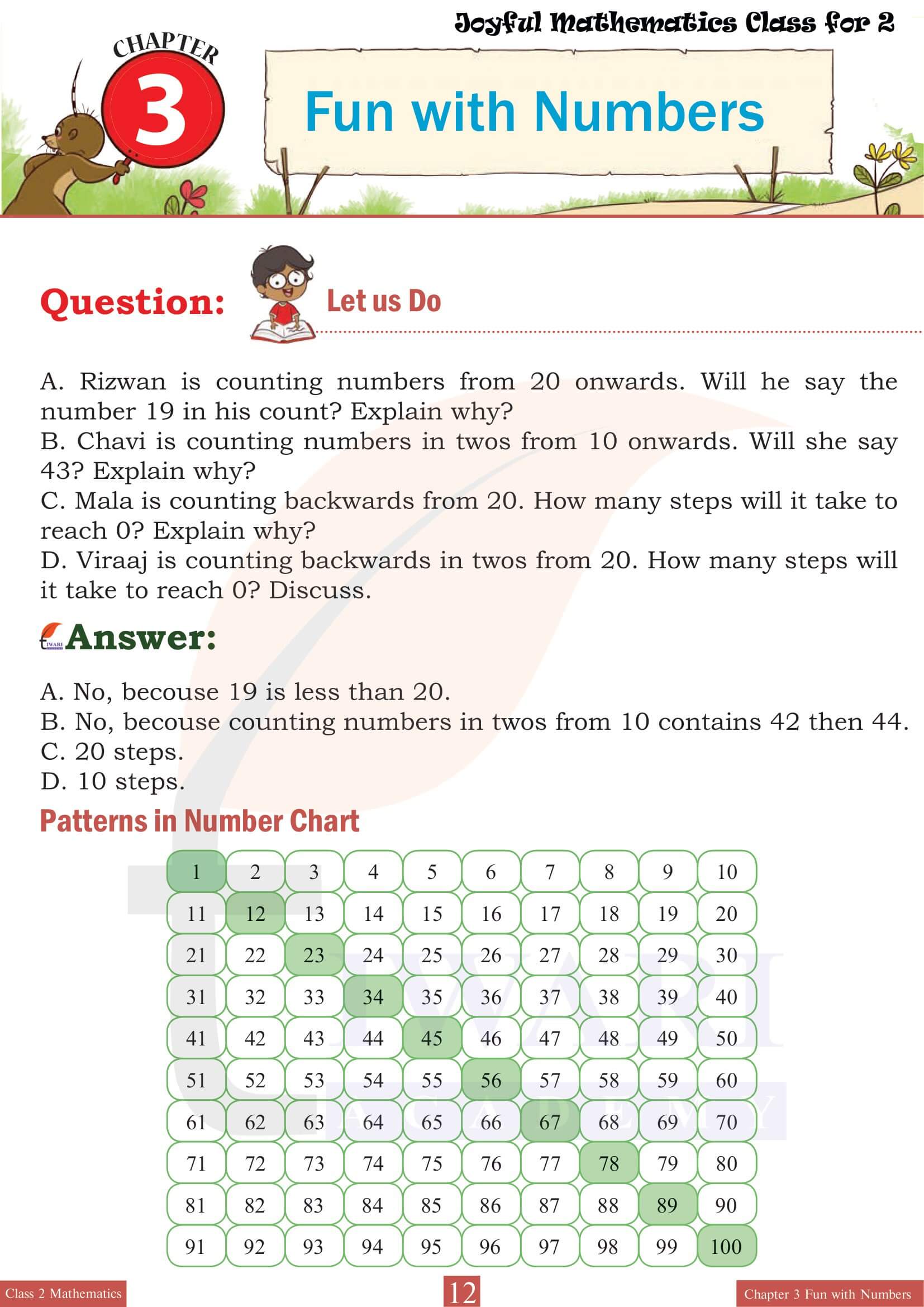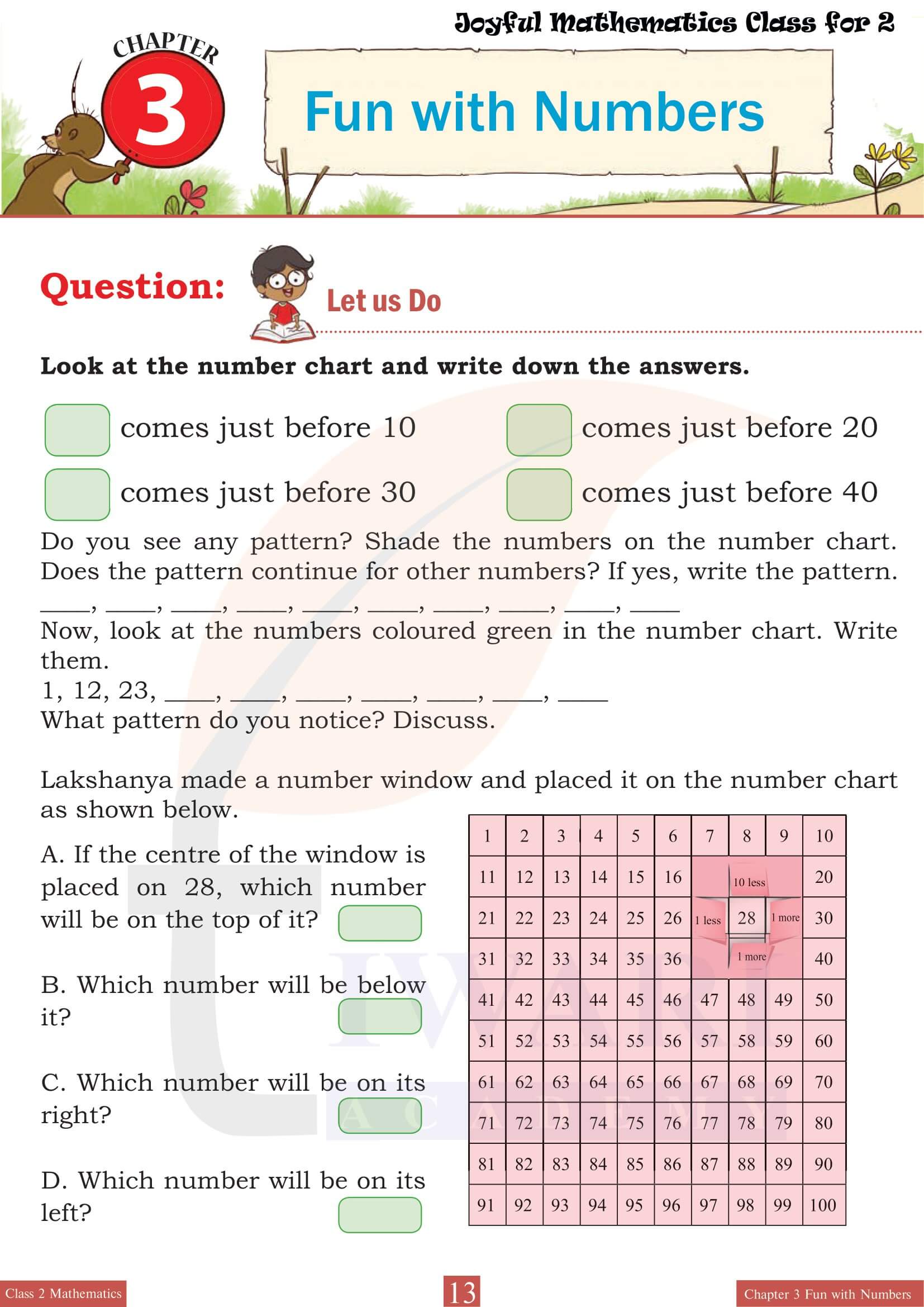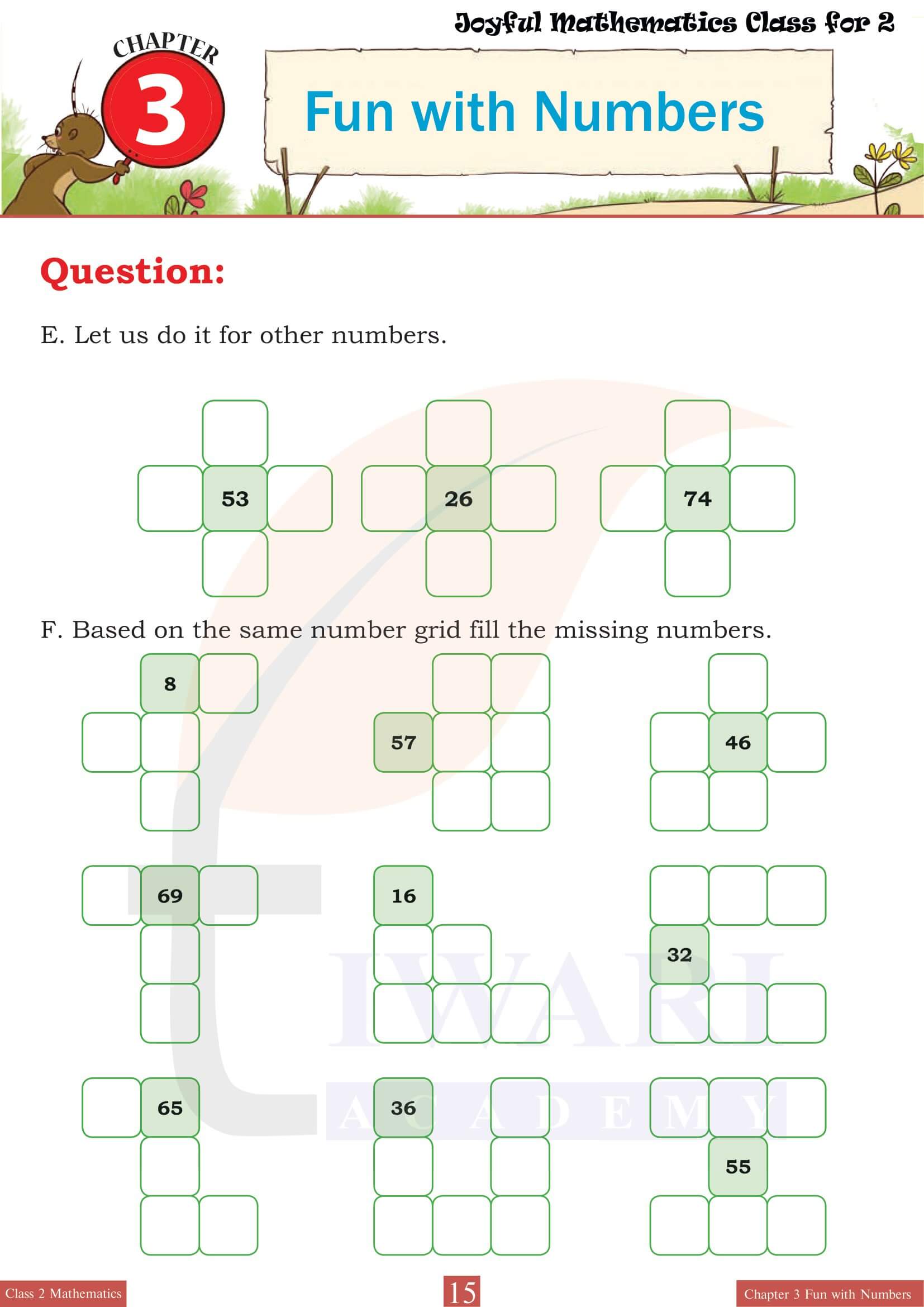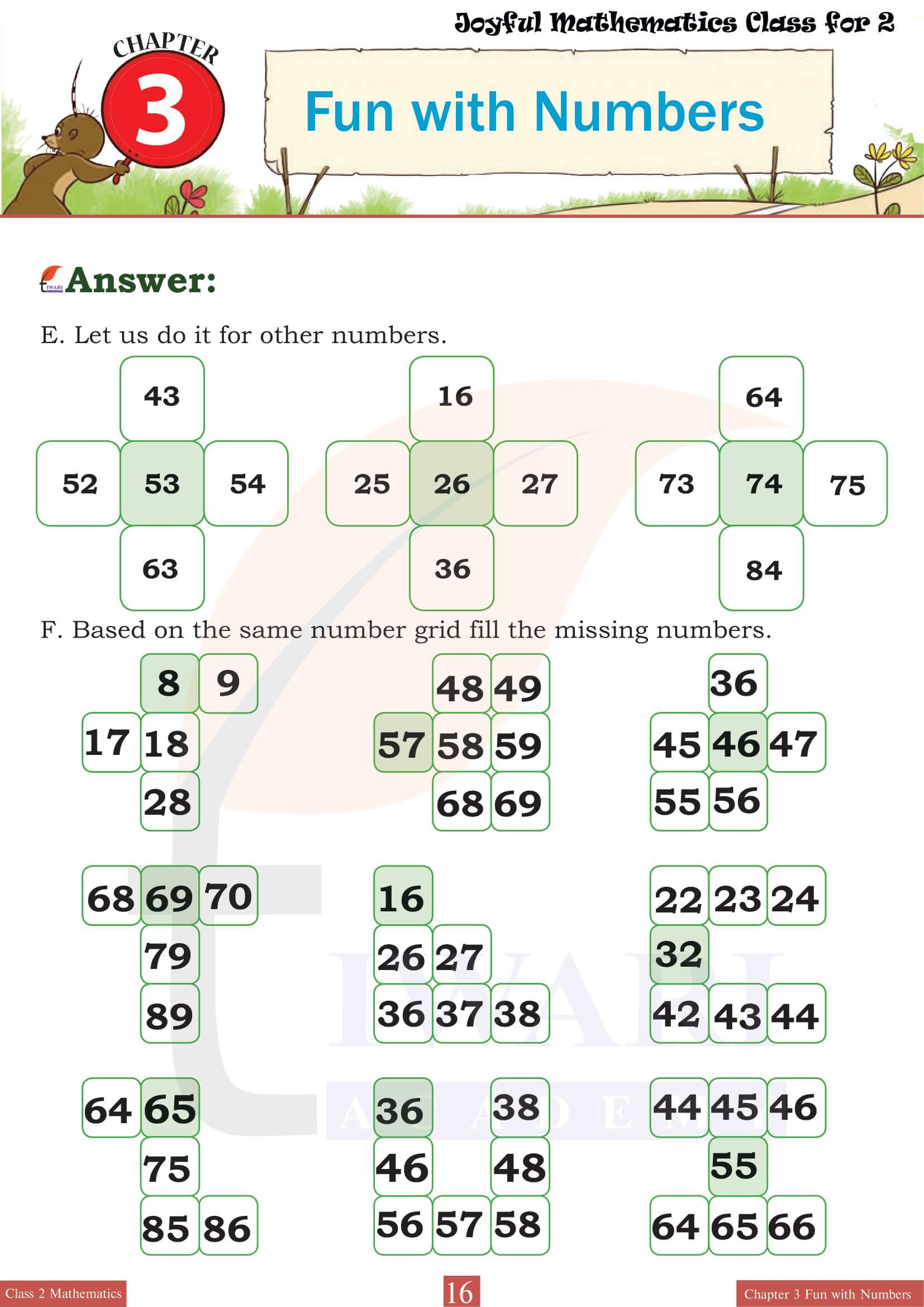NCERT Solutions for Class 2 Joyful Maths Chapter 3 Fun with Numbers (Numbers 1 to 100) in Hindi and English Medium revised and updated for session 2025-26. Class 2 Maths chapter 3 solutions are given in simple format with explanation. Class 2 NCERT Math Textbook Chapter 3 Fun with Numbers introduces young learners to essential concepts like numbers 1 to 100 through engaging activities. This chapter focuses on building a strong foundation with number patterns, skip counting by 2s and 5s and comparing numbers.
Class 2 Joyful Maths Chapter 3 Fun with Numbers Solutions
Interactive Maths games and puzzles help students practice concepts such as ascending and descending order, even and odd numbers and the use of the number line. Parents and educators can utilize NCERT Class 2 Maths worksheets and practice questions to make learning enjoyable. NCERT solutions for Class 2 Maths textbook provide step-by-step explanations, helping students understand key topics effectively while preparing them for online tests and exams.
Study Plan for Class 2 Math
Study Plan for Class 2 Preparation
To reinforce learning, the chapter emphasizes practical exercises like place value, number sequencing activities, and counting exercises, which are aligned with the Class 2 Maths syllabus. The textbook solutions offer clarity, ensuring students grasp fundamental concepts. Resources like Fun with Numbers Class 2 solutions and PDFs of chapter-wise explanations enable parents to support their children’s studies. Educators can introduce Maths puzzles and activities to make lessons more engaging. By mastering these concepts, students can confidently progress in their mathematical journey while enjoying the process of learning with interactive tools and creative teaching methods.
Class 2 Maths Chapter 3 Fun with Numbers (Numbers 1 to 100)
Class 2 Maths Chapter 3, Fun with Numbers, introduces young learners to the exciting world of numbers ranging from 1 to 100. This chapter helps students develop a strong foundational understanding of numerical sequences and their significance in everyday life. Through engaging activities and illustrative examples, children learn to count, recognize and write numbers up to 100. Teachers and educational materials emphasize the concept of place value, demonstrating how units and tens combine to form these numbers. By making connections between numbers and real-world objects, children enhance their numerical literacy and develop an appreciation for mathematics in their surroundings.
Learning through Counting and Sequencing
The chapter 3 of class 2 mathematics, delves into the critical skill of counting in sequences and understanding the order of numbers within the range of 1 to 100. Students engage in various counting exercises, such as counting forwards and backwards, identifying missing numbers in a sequence, and recognizing patterns. These activities are designed to improve their counting fluency and enable them to navigate the number line with ease. By mastering sequencing, students lay the groundwork for more complex mathematical concepts, such as addition and subtraction, which they will encounter in later chapters.
Place Value Understanding
An essential component of chapter 3, in class 2 Maths, is the introduction to place value, which is fundamental to understanding how numbers are structured. Students learn that in a two-digit number, one digit represents the tens place while the other signifies the units place. Through hands-on activities and visual representations, like place value charts and blocks, children grasp how numbers are composed of tens and ones. This understanding is pivotal in developing their ability to perform basic arithmetic operations and solve problems involving larger numbers.
Comparing and Ordering Numbers
The chapter 3 focuses on comparing and ordering numbers within the 1 to 100 range. Students learn to use symbols like greater than (>), less than (<), and equal to (=) to compare two numbers. They also practice arranging sets of numbers in both ascending and descending order. These exercises not only enhance their numerical reasoning skills but also prepare them for understanding mathematical relationships and patterns. Through repeated practice, children become proficient in evaluating the magnitude of numbers and making logical comparisons.
Introduction to Even and Odd Numbers
“Fun with Numbers” also introduces the concepts of even and odd numbers, making students aware of these two distinct categories. Through various activities, students identify and classify numbers as either even or odd based on their last digit. This classification further enriches their understanding of numbers and lays a foundation for future topics in arithmetic. Recognizing even and odd numbers also helps students in developing early algebraic thinking, understanding divisibility rules, and exploring number properties more deeply.
Practical Applications and Games
The chapter 3 of class 2 mathematics, concludes by linking the learned concepts to practical applications and engaging students in interactive games. By relating numerical knowledge to real-life scenarios, such as counting objects, money, or understanding time, children see the relevance of numbers beyond the classroom.
Games and puzzles enhance their learning experience, making it enjoyable and memorable. These activities not only reinforce the concepts taught but also encourage teamwork, problem-solving, and critical thinking skills, which are essential for young learners’ overall development.
What is covered in Class 2 Maths Chapter 3 Fun with Numbers?
This chapter introduces students to numbers 1 to 100, focusing on concepts like number patterns, place value, skip counting by 2s and 5s and comparing numbers. It also covers ascending and descending order, even and odd numbers and number line exercises.
How can students practice Fun with Numbers?
Students can practice through Class 2 Maths worksheets, puzzles and interactive games. Activities like number sequencing and counting exercises help reinforce learning. NCERT solutions provide step-by-step guidance for better understanding.
What resources are helpful for Chapter 3?
Useful resources include NCERT solutions for Class 2 Maths, chapter-wise explanations, online tests and practice PDFs. Interactive games and puzzles also make learning engaging.
How does this chapter help in overall Maths learning?
The chapter builds a strong foundation by teaching essential number concepts. Understanding place value, skip counting and patterns improves logical reasoning, setting the stage for advanced topics.
Why is this chapter important for Class 2 students?
It develops core number skills, enhances problem-solving abilities and boosts confidence. Mastery of these concepts ensures a smooth transition to more complex mathematical ideas.


